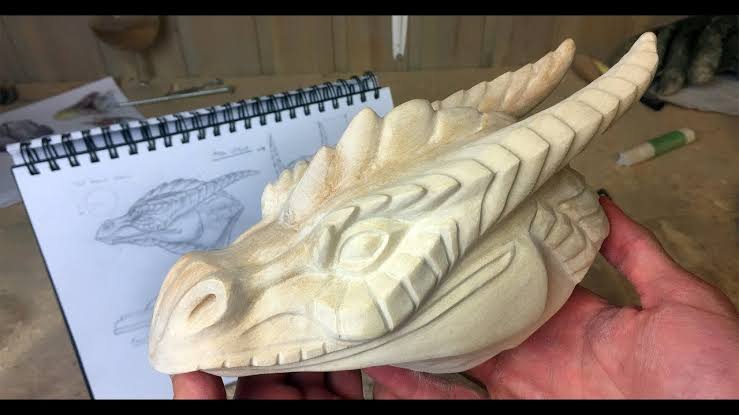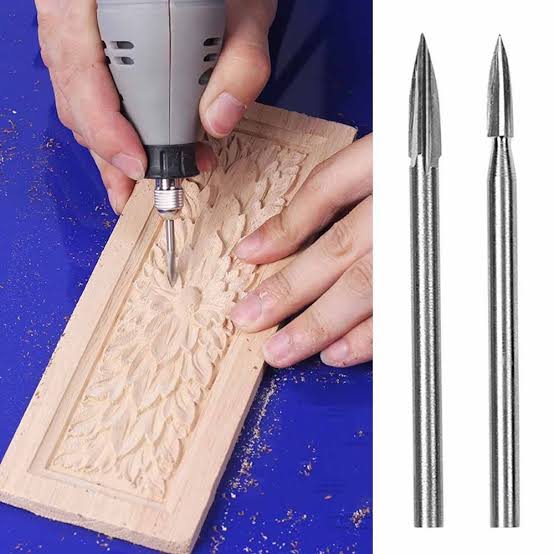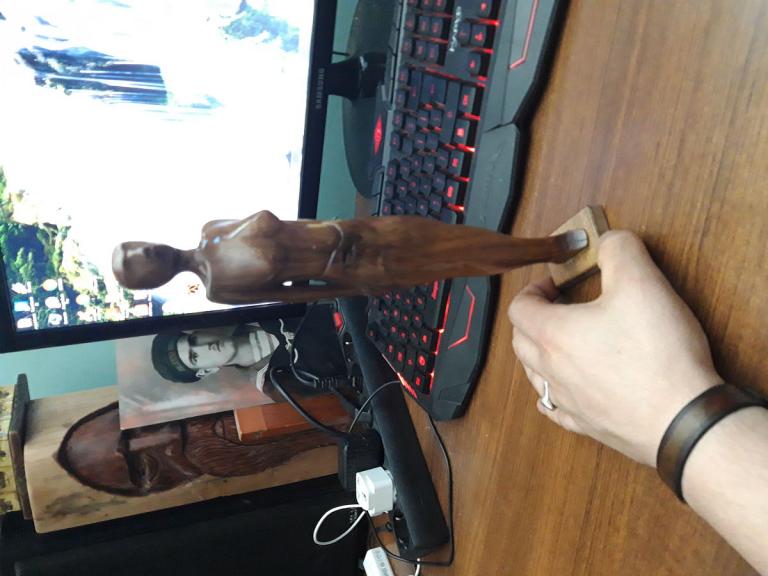Wood carvin art
8 min readChinese wood carvings are generally divided into the building carving, furniture carving and display carving. As artwares displayed and toyed the wood carvings dated from the Song Dynasty. The toying trend gradually emerged, under the involvement and advocation by intellectuals, and was at the height in the ming and Qing Dynasties The display carvings are mostly small wood carvings, classified as a traditional category among wood carving craft, and can be displayed and placed on the cabinet, window, platform, table, desk and frame. They are mostly originally relevant to the bamboo carving, or are made by bamboo sculptors. Before the Ming dynasty when the bamboo carving became a specialized art, bamboo, ivories and rhinoceros horns had been mostly used by famous sculptors

The wood carvings can also be used to decorate various furniture and such othe artwares as jadewares, cloisonne enamel, etc. In general, such tree species of fine and tough quality and not liable to deform are selected, e.g., nanmu, rosewood, camphorwood, cedarwood, gingko, agilawood, annatto, longan, etc. The tree root carving artworks in the natural pattern are tree root carvings. The wood carvings also consist of round, relief, hollow and line carvings and so on, and can be made through the combination of several skills. In some cases, colors are utilized for protecting the wood quality and beautification
Chinese wood carvings have a long history fish wood carvings appeared in the Hemudu Culture, Yuyao City, Zhejiang Province, over 7,000 years ago. Simple clapper patterns in the ceramics craft and the incising craft used for engraved coffin planks happened in the Shang Dynasty. In the Warring States Period, the three-dimensional round carvings were developed. In the Qin and han dynasties, such wooden animal figurines as horses, cattle, dogs, etc were bonded together by making in parts. In the Tang, Song and Yuan Dynasties, statue, immortal and budda, bird and beast wood carvings, etc were mostly made by the round carving and colored drawing skills, and they are featured by lifelikeness and lingering charm. For instance, the painted noble lady in the tang Dynasty unearthed from a Tang Tomb in Xinjiang was carved out of an integral wood, and then colorpainted; she was full and round, was gorgeously dressed up, worn a trailing baggy dress of loose sleeves, and represented the classic image of noble women in the flourishing Tang Dynasty. Li Tieguai, a boxwood carving in Yuan Dynasty was featured by a smooth way of cutting and dynamic in still, andwas a piece of representative works for statue wood carvings focusing on artistic conceptions in the Yuan Dynasty
The display wood carvings in the Ming and Qing Dynasties were frequently themed by life customs and fairy tales and the deep carving and inlaying crafts were adopted, in addition to the round carving Statue wood carvings were mostly made with the round and line carving skills, e. g, the standing boxwood Avalokitesvaracarving in the late Ming dynasty, which was made of an integral tree trunk by the round carving, is featured by smooth and soft lines, stands sideways and has a peaceful facial expression. The Six Children Playing with Maitreya, a boxwood carving in the Qing Dynasty was made by zhu Zichang, the creator of Zhejiang boxwood carvings it is featured by vivid modeling and mellow and full cutting ways. as for such utensil wood carvings as pen containers, the relief and line carving methods were generally used, and sometimes, the inlaying craft was adopted. For instance, in the rosewood pen container with pattern of nine dragons in the Ming Dynasty, with clouds as the background nine dragons’ tails were made by the high relief carving and the pupils were mostly inlaid mother-of-pearl; the opening was inlaid with beasts and flowers of turquoises, lapis lazuli, etc. and the branches and tendrils were staggered silver wires. The boxwood pen container with plum and bamboo patterns in the Qing Dynasty was made out of a natural old boxwood trunk, on which there are five bamboo stems and one plum stem among bamboo branches and plum tendrils. It is innovative in modeling despite of the limited capacity. So, it is considered that itsviewing value is higher than its practical value. The building wood carvings are usually advantageous in the deep and relief carving methods, consistent with the folk customs in all places, and are rich in full-bodied regional styles
Modern wood carvings are distributed everywhere in China, and many schools of rich local features and their own merits were formed due to the different selected materials and crafts resulting from the differences in the local folk customs, cultures and resource conditions the famous producing areas and varieties include wood carvings in Dongyang, Zhejiang, gold lacquer wood carvings in Guangdong, longan wood carvings in Fujian annatto carvings in Suzhou Jiangsu and beijing wood carvings in Huizhou, boxwood carvings in Wenzhou, Zhejiang Shanghai, Fujian, etc antique wood carvings in Nanjing, Chinese pistache wood carvings in Qufu, Shandong and so on

Dongyang, Zhejiang is famous long for the village of carvings. Dongyang wood carvings approximately originated from the Tang dynasty, developed in the Song Dynasty, and became flourishing in the ming and Qing Dynasties. The original wooden luster and texture were kept in and fine grinding was adopted for them, so that they are featured by smoothness, fineness, delicacy and brilliancy. The planar relief carving is an essence of the dongyang wood carvings, is 2 to 5mm deep, and embodies the subject sense of objects with the line-carving force The themes were mainly historical stories and folklores, and the patterns were rich and changeable. The relief carving requires”full carving “that is to say, decorative patterns are carved on the whole utensil surface in a richly layered, dense and three-dimensional way, resulting in a unique artistic style in the wood carvings of lu guangzheng a representative theround, high relief and hollow relief carving methods were combined, and they are featured by fine cutting ways and cunning patterns. the pine and Crane in the Spring, Birds Worshipping the Phoenix and Spring garden created by him were in succession displayed in Zhejiang Hall, Great Hall of the People in Beijing
The gold lacquer wood carving is a special local product of Chaozhou, Guangdong, is also called “Chaozhou wood carving and is named due to the gold attached onto its surface. It was originally a sort of building decoration art in Ancient China, and later became a wood carving school under the influence of the local artistic feature. a kind of lacquer is purposefully configured in Chaozhou, which can not only be used to attach gold foil onto wood, but used for moisture and corrosion prevention Chaozhou wood carving can be traced to the years before the tang dynasty; in the Qing dynasty it developed to the highest point the skill turned from the single-layerhollow carving to multi-layer hollow carving patterns also developed from reflectionsbetween realitiesto coexistence of nihility and reality and as a result, the patterns had the artistic effect featuring an intense distance and size comparison. In Chaozhou and shantou guangdong residents attach importance to traditional residence decorations, and especially ancestral temples are provided with carved beams and painted rafters. For instance, in a gold lacquer wood carving in the Qing dynasty otuses reeds and egrets were adopted for the flower lintel under the beam frame with lotus and egret patterns, and were formed in a fine, natural and smooth way Fujian Longan wood carving developed from the building furniture decoration and temple idol carvings, centering on Fuzhou, and became mature at the late ming Dynasty and early Qing Dynasty. Longan wood was mainly produced in South Fujian, is slightly crisp in quality and fine and dense in texture, and is auburn the trunk(espthe root part) of an old longan is grotesque in shape and thus ideal for sculpture. The local wood carving artists carved the roots, creases and nodes into various statues, birds or beasts by checking their shapes and cutting with axes and cutters, which were modeled vividly and exaggeratively, and were elegant and rational in structure. These wood carvings, moreover, can take on colorfast primitive copper yellow or tangerine yellow after being painted. Besides, the Quanzhou wood carving, appearing in theTang Dynasty and Five-generation Period, has a long history. Up to now, the wood carving industry has emerged resulting in such wood carving varieties as longan wood carving boxwood carving gold idol wood carving simulate carving root carving, etc, all of which are mainly made by the round carving. The Quanzhou wood carvings are themed by various patterns, are rich in variety and are featured b primitive and simple style and loose and clear lines the natural form wood carving of Lu sili, a contemporary Quanzhou wood carving master is featured by conception modeling according to shape, exaggerative expression and pursuit for romantic charm. For instance, in the Wang Xizhi’s Love for Geese, the person stands among geese vividly and three-dimensionally, which indicates the Wei-Jin Demeanor The Suzhou annatto carvings are made of firm and fine annatto, and are mainly themed by statues, landscapes, flowers and birds, buildings, calligraphy, etc. The
carving skills are exquisite, and mainly consist of the round, relief, deep and line carving, etc. The products involved are furniture carvings, building carvings and small display wood carvings. For example, on the Phoenix Tree Leaves hand pillow, a works of Lu hansheng a famous modern annatto carving artist the imbricated shape oftraditional bamboo carving hand pillows was thoroughly changed, two naturallystretching phoenix tree leaves were modeled, the bottom was hollowed, old and strong branches and stems were adopted to set off the leaves in a simple and concise way, just like natural leaves falling down onto the table, and the pillow is convenient for use. Lu takes the hollowness, easiness exquisiteness nature and craftiness”as the for the wood carvings of the Suzhou craft. the hollowness means both no c standards for creating and evaluating works, which was also the theoretical conclusionimagination and concealing in skill, indicating nihility in existence and existence in nihility the easiness means relaxation exquisiteness means ingeniousness and flexibility nature means natural; craftiness means wonderfulness, i.e. “risks hidden in oddness and fun generated by craftiness
The huizhou wood carving is made of various materials, including pine, fir camphor, nanmu, ginkgo and other sub-rigid or soft materials. However, the huizhou wood carving focuses on the themes and is featured by perfect carving crafts and pattern lines, affecting the surrounding areas dramatically. In the Ming and Qing Dynasties building and furniture decorations were mainly used in the works which were famous for large-scale exquisite carved patterns. the carved patterns are mainly men tilling the farm and women weaving, fishermen, woodcutters, farmers and scholars as well as some myths and legends, historical stories, classical novels, etc, on which people’s good ideals and pursuits were placed, and which reflected the masters identities, positions and cultural tastes









